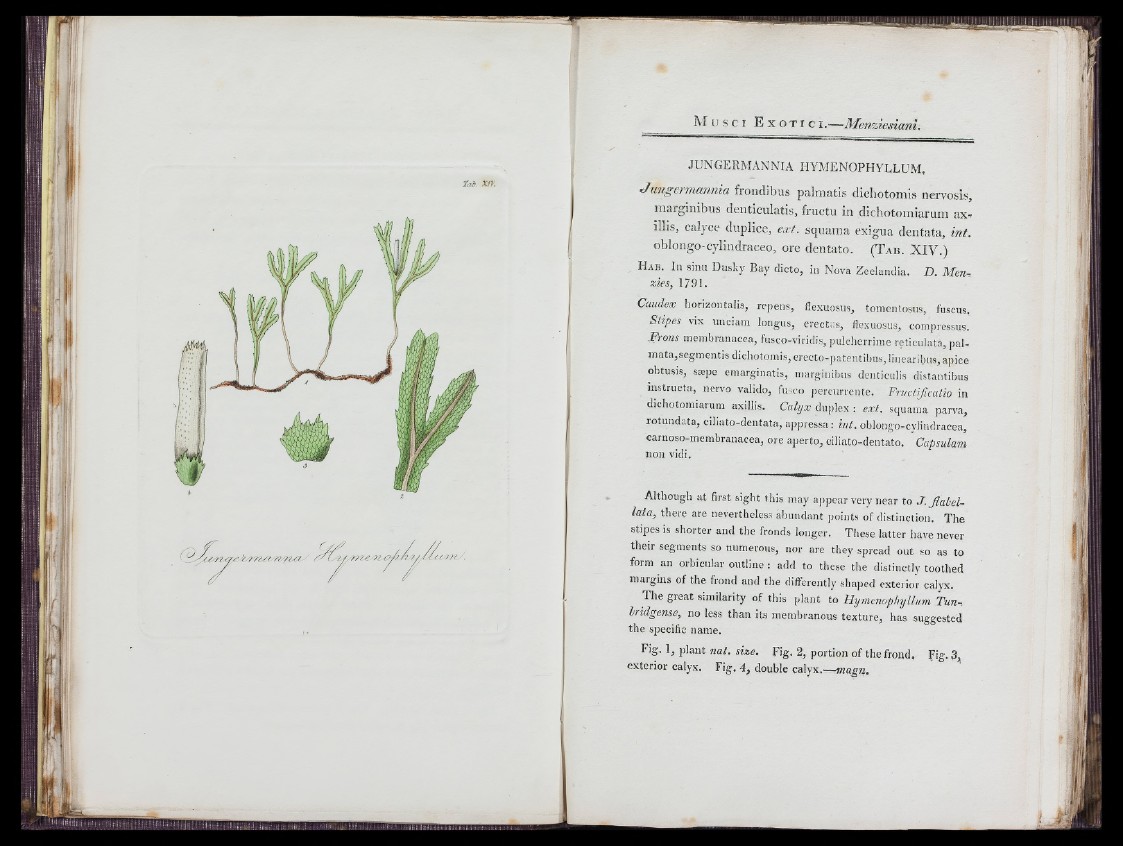
7ab. Xiì.
■'yf/'/ctyr'c cnc/ n n c / re ty?.j//n/r d.v?d/'ly/iC f ' ///
/ ^
JUN GE RMAN NIA 11YME NOPH YLLUM,
Jungermannia frondibus palmatis dichotomis nervosis,
niarginibus denticulatis, fructu in dichotomiarum ax-
ilhs, calyce duplice, ext. squama exigua dentata, int.
oblongo-cylindraceo, ore dentato. ( T a b . XIV.)
Hab. In sinu Dusky Bay dicto, in Nova Zeelandia. D. Men.
zies, 1791.
Caudex horizontalis, repens, ilexuosus, tomentosus, fuscus.
Stipes vix uuciam lorigus, erectus, flexuosus, compressus.
Fions membranacea, fiisco-viridis, pulcherrime reticulata, pal-
mata,segmentis dichotomis, erecto-patentibus, linearibus, apice
obtusis, sEejie emarginatis, marginibus denticulis distantibus
in-structa, nervo valido, fuico jiercurrente. Fructìficalìo in
dichotomiarum axillis. Calijx duplex : ext. squama parva,
rotundata, cibato-dentata, appressa; int. oblongo-cylindracea,
carnoso-membranacea, ore aperto, ciliato-dentato. ru p siilam
non vidi.
Although at first sight this may appear very near to J. flabellata,
there are rievertheles.s abundant ¡loiiits of distinction. The
stipes is shorter and the fronds longer. These latter have never
their segments so numerous, nor are they spread out so as to
form an orbicular outline : add to these the distinctly toothed
margins of the frond and the differently shaped exterior calyx.
The great similarity of this plant to HymenophyUnm Tun-.
Iridgense, no less than its membranous texture, has suggested
the specific name.
Fig. 1, plant nat. size. Fig. 2, portion of the frond, Fig. 3,
exterior calyx. Fig. 4, double calyx.—magn.
ifli '!I
a <il